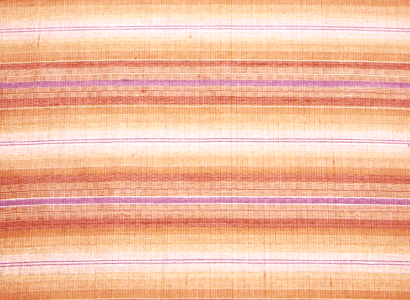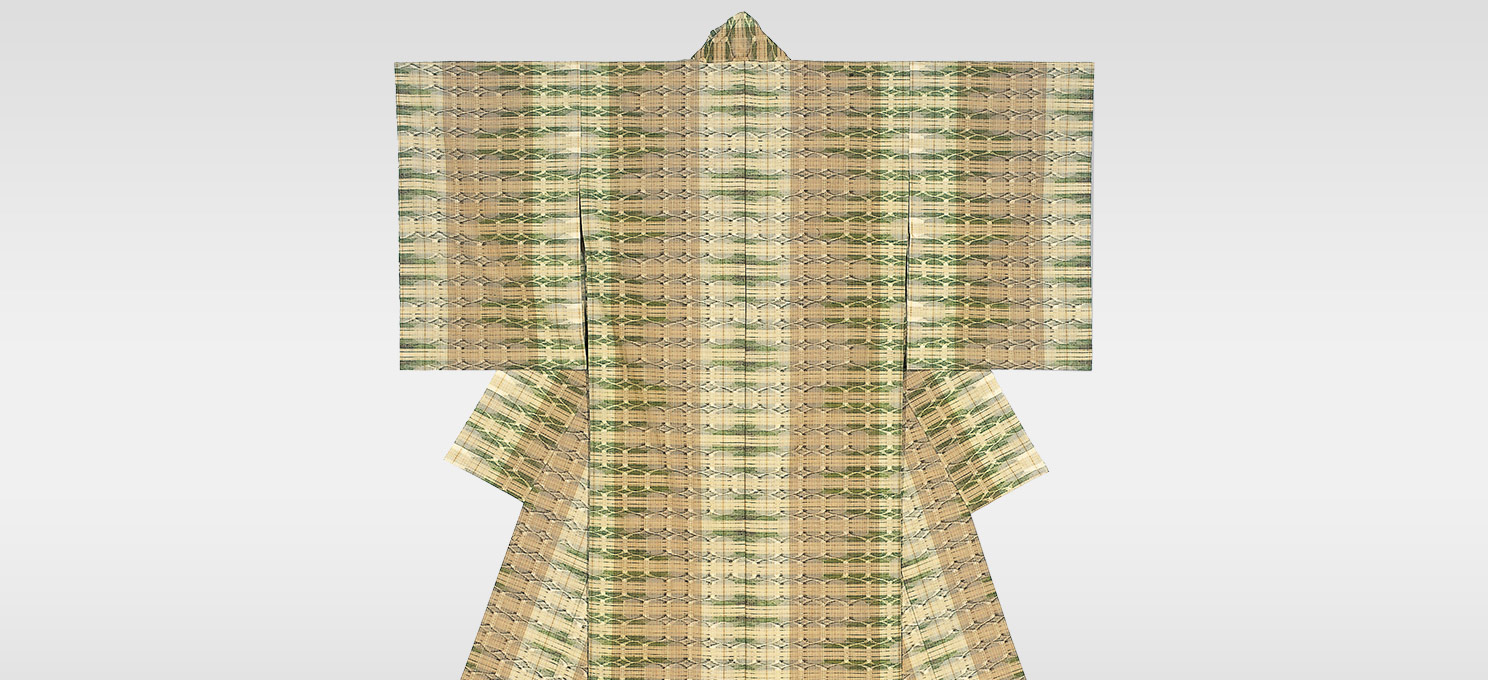
Description
Tsumugi silk is woven from spun silk thread (tsumugi ito). Tsumugi is not as smooth or glossy as reeled silk, and features a simple, nubby texture.
Although traditionally used predominantly for striped or kasuri patterns, in recent years it has become possible to produce a wide range of expressions such as gradations and other designs using dyed threads. Tsumugi silk’s light, durable, and supple texture makes it an ideal fabric for kimono and obi.
Process
Process for tsumugi spun silk
- STEP 1
Silkworms produce thread that form a cocoon.
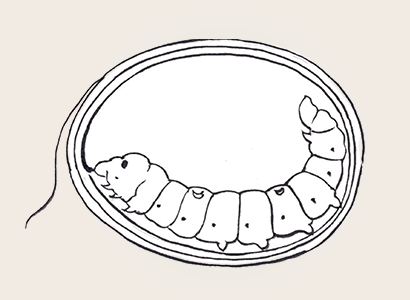
- STEP 2
Reeled silk (left), silk wadding (mawata, center), silkworm cocoons (right).
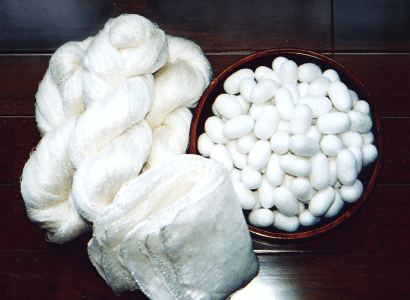
- STEP 3
Thread is drawn out of a stretched cocoon (mawata).
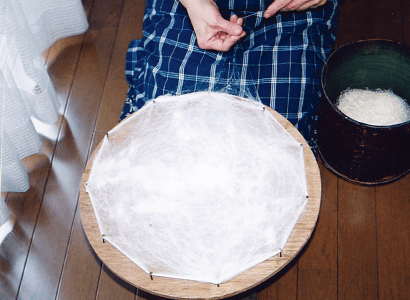
- STEP 4
The thread is dipped in dye.
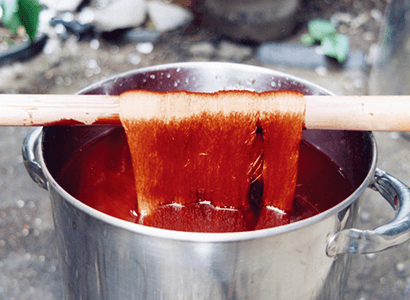
Process for tsumugi silk fabric
- STEP 1
The warp threads (vertical) are aligned on the warp beam of a loom and wound up.
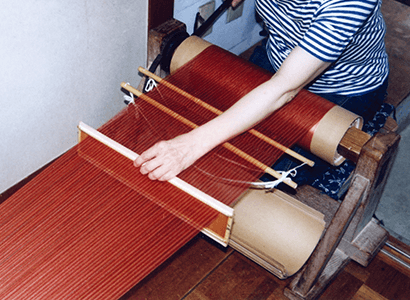
- STEP 2
The weft threads (horizontal) are wound onto a spindle and then attached to a shuttle.
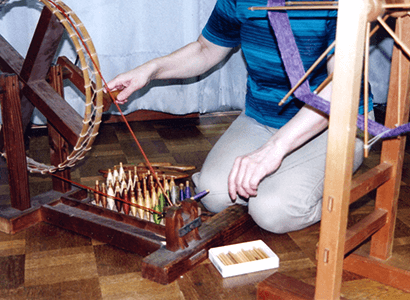
- STEP 3
The threads are woven together by passing the weft threads on the shuttle through the warp threads on the loom.
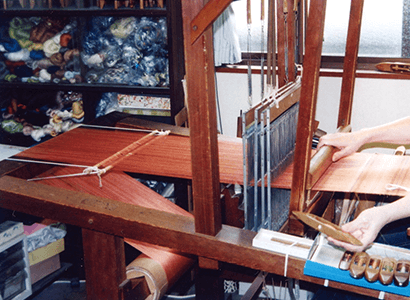
- STEP 4
A bolt of fabric about 40 centimeters wide (15.7 inches) and 13 meters long is produced (enough for one kimono).
